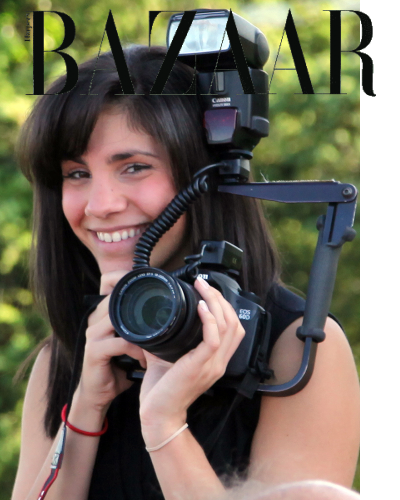
|
| In this Saturday, Nov. 21, 2015 photo, Cuban migrants line up for breakfast given to them by an evangelical church, outside of the border control building in Penas Blancas, Costa Rica, on the border with Nicaragua. Thousands of Cuban migrants have been able to make the trip to the U.S. thanks to a constant flow of information between migrants starting the journey and those who have just completed it. |
PENAS
BLANCAS, Costa Rica (AP) -- As summer began to bake the central
Cuban city of Sancti Spiritus, Elio Alvarez and Lideisy Hernandez sold
their tiny apartment and everything in it for $5,000 and joined the
largest migration from their homeland in decades.
Buying
two smartphones for $160 apiece on a layover on their way to Ecuador,
they plugged themselves into a highly organized, well-funded and
increasingly successful homebrewed effort to make human traffickers
obsolete by using smartphones and messaging apps on much of the
3,400-mile (5,500-kilometer) overland journey that's become Cubans' main
route to the U.S.
Some 45,000 Cubans are
expected to move by bus, boat, taxi and on foot from Ecuador and other
South and Central American countries to the Texas and California borders
this year, afraid that the normalization of relations between the U.S.
and Cuba will mean an imminent end to special immigration privileges
that date to the opening of the Cold War. With thousands more taking
rafts across the Florida Straits, 2015 may witness the biggest outflow
of Cubans since the 1980 Mariel boatlift that hauled 125,000 people
across the Florida Straits.
The overland
exodus has caused a border crisis in Central America, set off tensions
in the newly friendly U.S.-Cuban relationship and sparked rising calls
in the U.S. to end Cubans' automatic right to legal residency once they
touch U.S. soil.
At the heart of it all is
Cubans' ability to cross some of the world's most dangerous territory
relatively unscathed by the corrupt border guards, criminal gangs and
human traffickers known as coyotes who make life hell for so many other
Latin American migrants. Key to that ability is the constant flow of
information between migrants starting the journey and those who have
just completed it.
"Those who've arrived have
gotten in touch with their acquaintances, their friends, and tell them
how the route is. That means that no one needs a coyote," said
Hernandez, a 32-year-old psychologist. "You go making friends along the
way. I myself have 70, 80-something friends on Facebook who've already
gotten to the United States."
Cuban migrants
start with an advantage others can only dream of: Many countries along
the route grant Cubans free passage because their government does not
respond to most requests for information about illegal migrants that
would allow them to be deported. And many Cubans who run out of money
along the way have access to hundreds or thousands of dollars in backup
funds sent by relatives who belong to one of the United States' most
prosperous immigrant groups.
Once they reach
the U.S. border, they can just show up at an established U.S. port of
entry and declare their nationality, avoiding the dangerous desert
crossings that confront many migrants who try to avoid U.S.
Border
Patrol. Federal data shows 45,000 Cubans appeared at U.S. land border
points in the 12 months ending Sept. 20, and at least as many are
expected in the coming year.
But along the
way, Cubans still must navigate jungles, rivers, at least seven
international borders and countries in the grip of gangs responsible for
some of the world's highest homicide rates.
Asked
their secret, Cubans interviewed in shelters along Costa Rica's
northern border with Nicaragua almost universally pointed to cheap
smartphones, data plans and Facebook.
"We're
completely, always, alert to our phones," Alvarez said, gesturing to his
Samsung Galaxy S3 Mini outside a border statin in northern Costa Rica,
where he and some 2,000 other Cuban migrants were stuck waiting for
resolution of a regional conflict set off by Nicaragua's closure of the
crossing. "This is our best friend, the phone. It's always on, always
ready."
The metallic "zing!" of a new message
arriving in the Facebook Messenger app has become the soundtrack to this
year's historic migration as Cubans consult friends further along the
route for tips on bus routes, border closures, even how much to bribe
the notoriously corrupt Colombian police.
"They
tell you when you can get money, at what moment you can arrive
somewhere, what hotel to go to," said Annieli de los Reyes, pharmacist
from the eastern city of Camaguey. "In all of those things, you run less
risk and go with more security and peace of mind."
While
many move across large swathes of territory independent of coyotes,
others still depend on traffickers, most commonly when they need to get
across complicated borders.
On Nov. 10, a
U.S.-backed Costa Rican task force on human trafficking arrested 12
people suspected of helping run an international ring that charged
Cubans between $7,000 and $15,000 to be smuggled from South America to
the U.S. border, or $400 to be moved safely across Costa Rica.
Alongside
the anti-trafficking operation, Costa Rica began holding Cubans in the
town of Paso Canoas on the Panamanian border. Their numbers grew to
around 1,600 until Costa Rica announced on Nov. 13 that it would allow
them to transit the country to Nicaragua. Complaining that it wasn't
consulted, Nicaragua dispatched soldiers to the border to block the
Cubans' passage, setting off minor clashes at the Penas Blancas crossing
on Nov. 15.
The dispute has left some 2,000
Cubans stranded in shelters in Guanacaste province on the Nicaraguan
border, with dozens more arriving daily. The local sales office for
telecommunications company Movistar has increased the number of sales
vans along the border from two to seven, most stationed permanently
outside the Cubans' temporary encampments in schools and churches,
selling 2-for-1 $3-per-megabyte data packages to a steady stream of
Cuban migrants.
Central America governments
have called an emergency meeting on the crisis in El Salvador on
Tuesday. Nicaragua, a close socialist ally of Cuba, has not publicly
responded to a Costa Rican proposal to create a "humanitarian corridor"
for Cubans to move unhindered toward the U.S.
Cuba,
meanwhile, has made a series of public statements blaming U.S.
emigration policies for drawing so many from their homeland, draining
the country of badly needed professionals and working-age adults.
Ironically, the Cuban government has been joined by an increasing number
of Cuban-American legislators in the U.S. who say the Cold War-era
Cuban Adjustment Act that grants new migrants special privileges is
being abused by economic migrants instead of granting asylum to
political refugees as originally intended.
Outside
observers say Cuba's own policies also fuel emigration, which siphons
dissatisfied Cubans away from the island and increases the number of
people injecting badly needed remittances into Cuba's cash-starved
economy. The communist government did away with a hated exit permit
three years ago and also began allowing Cubans to establish permanent
residence in the U.S. while maintaining their property rights and access
to social services in Cuba.
Geny Machado
worked as a private shopkeeper in the Havana neighborhood of Guanabacoa
before he hopscotched from Trinidad and Tobago to Venezuela, where he
started a months-long journey north with stops to work and earn money
for the next stages. Other Cubans interviewed in Costa Rica were making
their way from as far south as Chile, Argentina and Brazil.
Machado
showed a reporter a string of Facebook messages from a friend recently
arrived in the U.S. advising him on the best route from Guatemala City
to the Mexican border; what to say to Mexican border guards once he
arrived; what hotel to stay at on his first night in Mexico; and even
the nightly rate: $10.
"The one who's ahead
guides the one behind," said Machado, 45. "We go along communicating
like that. Social networks are what's helping Cubans along the whole
migration route, more than the coyotes."
When
migrants are stopped by border guards along the route, officials' first
step is contacting the migrant's country to confirm their identity. In
the case of Cubans, that's often impossible. The Cuban government
doesn't respond to as many as 90 percent of inquiries about people with
Cuban passports but no visas, said Mario Madrazo Ubach, head of
immigration control at Mexico's National Migration Institute. Since
entering the country without a visa in itself isn't a crime in Mexico,
Mexican authorities generally give the Cubans 20 days to leave the
country, which they use to get to the U.S. border and claim legal
residency. Similar scenarios take place throughout Central America.
"You're not going to find Cubans in the back of tractor-trailers," Madrazo said.
Still,
Cubans are not immune to the dangers of northbound migration. A
migrants' rights group said in July that Mexican border officials had
been holding Cubans in border inspection stations until their relatives
in the U.S. sent as much as $5,000 to win their freedom.
Mario
Martinez, 24, trained as a computer programmer but worked in a barber
shop in the Havana neighborhood of Marianao until he left for Ecuador
this fall with his friend and traveling partner Manuel Gonzalez. Sitting
on the floor of a public bathroom next to the only available electrical
outlet he could find in a bus station on the Costa Rica-Nicaragua
border, he said that Facebook friends had been steering the two men away
from coyotes, saying that "it was going to end up being very expensive,
that they were going to charge us more money, that they could cheat
us."
"The first ones, sure, they had to do
this with 'contacts,' the great majority had coyotes," Martinez said as
Gonzalez's Facebook Messenger app pinged with the sound of new messages
arriving. "But there were coyotes who were picking people up to cheat
them, to kill people, to rape them. So now we Cubans are showing each
other how to do the journey on our own."














No comments:
Post a Comment
Note: Only a member of this blog may post a comment.